Enhanced TDS
Identification & Functionality
- Chemical Family
- RTU Product Type
- Technologies
- Product Families
Features & Benefits
- Ready-to-Use Product Features
- Features and Benefits
- High mechanical and electrical properties at elevated temperature
- Very high thermal shock resistance
- Excellent toughness combined with elevated glass transition temperature
Applications & Uses
- Application Area
- Composites Processing Methods
- Cure Method
- Product End Uses
- Markets
- Applications
- Application Information
- Indoor electrical insulators for medium and high voltage, such as switch and apparatus components.
- Encapsulation of large metal parts.
- Recommended for applications with long-term stresses up to service temperature of 85°C.
- System Preparation
General instructions for preparing liquid resin systems.
- Long pot life is desirable in the processing of any casting resin system. Mix all of the components together very thoroughly at room temperature or slightly above and under vacuum. Intensive wetting of the filler is extremely important. Proper mixing will result in:
- Better flow properties and reduced tendency to shrinkage
- Lower internal stresses and therefore improved mechanical properties on object
- Improved partial discharge behaviour in high voltage applications.
- For the mixing of medium to high viscous casting resin systems and for mixing at lower temperatures, we recommend special thin film degassing mixers that may produce additional self-heating of 10-15 K as a result of friction. For low viscous casting resin systems, conventional anchor mixers are usually sufficient.
- In larger plants, two pre-mixers are used to mix the individual components with the respective quantities of fillers and additives under vacuum. Metering pumps then feed these premixes to the final mixer or a continuous mixer. The individual premixes can be stored at elevated temperature (about 60°C) for up to about 1 week, de-pending on formulation. Intermittent agitation during storage is advisable to prevent filler sedimentation.
- Mixing time can vary from 0.5 to 3 hours, depending on mixing temperature, quantity, mixing equipment and the particular application. The required vacuum is 0.5 to 8 mbar. Degassing time is recommended at least 1 hour. The vapour pressure of the individual components should be taken into account.
- In the case of dielectrically highly stressed parts, we recommend checking the quality consistency and pre-drying of the filler. Their moisture content should be <0.2%.
- Processing Information
The effective pot-life of the mix is about 2 days at temperatures below 25°C. Conventional batch mixers should be cleaned once a week or at the end of work. For longer interruptions of work, the pipes of the mixing and metering installations have to be cooled and cleaned with the ARALDITE resin component to prevent sedimentation and/or undesired viscosity increase. Interruptions over a weekend (approx. 48h) without cleaning are possible if the pipes are cooled at temperatures below 18°C. Viscosity increase and gel time at various temperatures, refer to Fig.4.1 and Fig.4.4.
Mold Temperature
APG process 130 - 160°C
Conventional vacuum casting 70 - 100°C
Demoulding times (depending on mould temperature and casting volume)
APG process 10 - 40 min
Conventional vacuum casting 5 - 8h
Cure Conditions
APG process (minimal postcure) 4h at 130°C or 3h at 140°C
Conventional vacuum casting 12h at 130°C or 8h at 140°C
To determine whether crosslinking has been carried to completion and the final proper-ties are optimal, it is necessary to carry out relevant measurements on the actual object or to measure the glass transition temperature. Different gelling and cure cycles in the manufacturing process could lead to a different crosslinking and glass transition temperature respectively.

Fig.4.1: Viscosity increase at 40, 60, 80 and 100°C (measurements with Rheomat 115) (Shear rate D = 10 s⁻¹)

Fig.4.2: Initial viscosity in function of temperature (measurements with Rheomat 115, D = 10 s⁻¹)
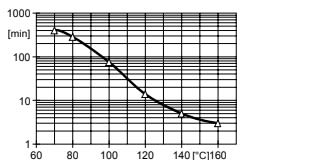
Fig.4.4: Gel time in function of temperature (measured with Gel norm Instrument, DIN 16945/6.3.1.)
Key Value Unit Test Method Condition Tensile strength 70 - 80 N/mm² ISO 527 Determined on standard test specimen at 23°C, Cured for 6h at 80°C + 10h at 130°C
Elongation at break 1.0 - 1.3 % ISO 527 Determined on standard test specimen at 23°C, Cured for 6h at 80°C + 10h at 130°C
E-modulus from tensile test 10,000 - 11,000 N/mm² ISO 527 Determined on standard test specimen at 23°C, Cured for 6h at 80°C + 10h at 130°C
Flexural strength at 23°C 110 - 125 N/mm² ISO 178 Determined on standard test specimen at 23°C, Cured for 6h at 80°C + 10h at 130°C
Flexural strength at 80°C 100 - 120 N/mm² ISO 178 Determined on standard test specimen at 23°C, Cured for 6h at 80°C + 10h at 130°C
Surface strain at 23°C 1.2 - 1.7 % ISO 178 Determined on standard test specimen at 23°C, Cured for 6h at 80°C + 10h at 130°C
Surface strain at 80°C 1.8 - 2.3 % ISO 178 Determined on standard test specimen at 23°C, Cured for 6h at 80°C + 10h at 130°C
E-modulus from flexural test -- N/mm² ISO 178 Determined on standard test specimen at 23°C, Cured for 6h at 80°C + 10h at 130°C
Compressive strength 140 - 150 N/mm² ISO 604 Determined on standard test specimen at 23°C, Cured for 6h at 80°C + 10h at 130°C
Compression set 6 - 7 % ISO 604 Determined on standard test specimen at 23°C, Cured for 6h at 80°C + 10h at 130°C
Impact strength at 23°C 7 - 10 kJ/mm² ISO 179 Determined on standard test specimen at 23°C, Cured for 6h at 80°C + 10h at 130°C
Impact strength at 80°C 8 - 11 kJ/mm² ISO 179 Determined on standard test specimen at 23°C, Cured for 6h at 80°C + 10h at 130°C
Critical stress intensity factor (KIC) 1.8 - 2.0 MPa·m¹/² CG 216-0/89 Determined on standard test specimen at 23°C, Cured for 6h at 80°C + 10h at 130°C
Specific energy at break (GIC) 300 - 350 J/m² CG 216-0/89 Determined on standard test specimen at 23°C, Cured for 6h at 80°C + 10h at 130°C
Martens temperature 100 - 115 °C DIN 53458 Determined on standard test specimen at 23°C, Cured for 6h at 80°C + 10h at 130°C
Heat distortion temperature (HDT) 105 - 120 °C ISO 75 Determined on standard test specimen at 23°C, Cured for 6h at 80°C + 10h at 130°C
Glass transition temperature (DSC) 105 - 125 °C IEC 1006 Determined on standard test specimen at 23°C, Cured for 6h at 80°C + 10h at 130°C
Coefficient of linear thermal expansion 35 - 37 × 10⁻⁶ K⁻¹ DIN 53752 Determined on standard test specimen at 23°C, Cured for 6h at 80°C + 10h at 130°C
Thermal conductivity 0.8 - 0.9 W/mK ISO 8894-1 Determined on standard test specimen at 23°C, Cured for 6h at 80°C + 10h at 130°C
Glow resistance Class 2b N/A DIN 53459 Determined on standard test specimen at 23°C, Cured for 6h at 80°C + 10h at 130°C
Flammability (Thickness of specimen: 4 mm) Class HB N/A UL 94 Determined on standard test specimen at 23°C, Cured for 6h at 80°C + 10h at 130°C
Flammability (Thickness of specimen: 12 mm) Class V1 N/A UL 94 Determined on standard test specimen at 23°C, Cured for 6h at 80°C + 10h at 130°C
Thermal endurance profile (TEP) Fig.7.1 - 7.4 N/A DIN/IEC 216 Determined on standard test specimen at 23°C, Cured for 6h at 80°C + 10h at 130°C
Temperature index (TI): weight loss (20000h/5000h) 186 / 210 °C N/A Determined on standard test specimen at 23°C, Cured for 6h at 80°C + 10h at 130°C
Temperature index (TI): flexural strength (20000h/5000h) 199 / 240 °C N/A Determined on standard test specimen at 23°C, Cured for 6h at 80°C + 10h at 130°C
Thermal ageing class (20000h) Class H N/A IEC 85 Determined on standard test specimen at 23°C, Cured for 6h at 80°C + 10h at 130°C
Water absorption (specimen: 50x50x4 mm) (Cold water 10 days at 23°C) 0.10 - 0.15 % by wt ISO 62 Determined on standard test specimen at 23°C, Cured for 6h at 80°C + 10h at 130°C
Water absorption (specimen: 50x50x4 mm) (Hot water 60 min at 100°C) 0.10 - 0.15 % by wt ISO 62 Determined on standard test specimen at 23°C, Cured for 6h at 80°C + 10h at 130°C
Decomposition temperature (heating rate: 10K/min) > 350 °C DTA Determined on standard test specimen at 23°C, Cured for 6h at 80°C + 10h at 130°C
Density (Filler load 60% by wt.) 1.75 - 1.80 g/cm³ DIN 55990 Determined on standard test specimen at 23°C, Cured for 6h at 80°C + 10h at 130°C
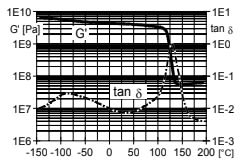
Fig.5.1: Shear modulus (G') and mechanical loss factor (tan δ) as a function of temperature (measured at 1 Hz) (ISO 6721-7, method C)
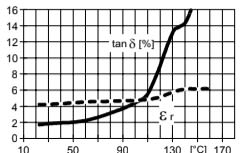
Fig.5.2: Coefficient of linear thermal expansion (α) as a function of temperature (reference temperature: 23°C) (ISO 11359-2)
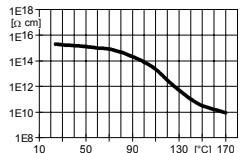
Fig.6.2: Volume resistivity (ρ) in function of temperature (measurement voltage: 1000 V, IEC 93/ DIN 53482)
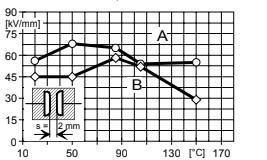
Fig.6.3: Breakdown field strength (Ed) in function of temperature with embedded Rogowski electrodes (DIN/ VDE 0303/ part 2) A = raising test / B = 5 min step test

Fig.6.5: Life time curves of the electric field stress (E) at 20, 50, 85, 105 and 150°C Test specimen with embedded sphere electrodes
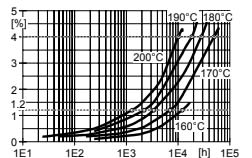
Fig.7.1: Weight loss (specimen: 50x50x3 mm) (limit: 4.0%)
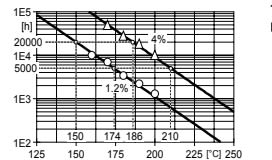
Fig.7.2: TI 150 / 174 (weight loss 1.2%) TI 186 / 210 (weight loss 4.0%)
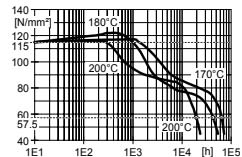
Fig.7.3: Loss of flexural strength (limit: 50% ISO 178)
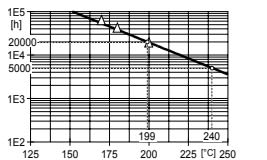
Fig.7.4: TI 199 / 240 (flexural strength)

Fig.7.5: Elongation (ε) in function of time at 23 and 85°C Tensile strain: 20 N/mm², ISO 899 / DIN 53444)
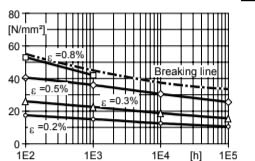
Fig.7.6: Flexural strength in function of temperature (ISO 178)
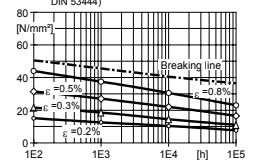
Fig.7.8: Creep diagram at 50°C Max. tensile strain in function of load period
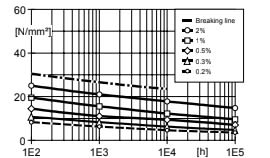
Fig.7.8: Creep diagram at 85°C Max. tensile strain in function of load period
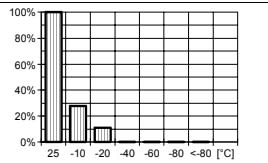
Fig.8.1: Crack resistance / Temperature shock test Passed specimen (%) in function of temperature steps Mean failure temperature: - 15°C Embedded metal parts with 2 mm radius
Properties
- Physical Form
- Notes
Because both products contain accelerating additives, avoid storing them for extended periods at elevated temperatures. Incorrect handle of the components can results in undesirable viscosity increases, change in reactivity and substandard cured-state properties.
Safety & Health
- First Aid Information
- Contamination of the eyes by resin, hardener or casting mix should be treated immediately by flushing with clean, running water for 10 to 15 minutes. A doctor should then be consulted.
- Material smeared or splashed on the skin should be dabbed off, and the contaminated area then washed and treated with a cleansing cream (see above). A doctor should be consulted in the event of severe irritation or burns. Contaminated clothing should be changed immediately.
- Anyone taken ill after inhaling vapours should be moved out of doors immediately.
- Handling Precautions
Protective clothing
Yes Gloves Essential Arm protector Recommended when skin contact likely
Goggestery diasses
Yes Respirator/dust mask
Recommended Skin protection before starting work
Apply barrier cream to exposed skin
Skin protection after washing
Apply barrier or nourishing cream
Skin protection cleansing of contaminated skin
Dab off with absorbent paper, wash with warm water and alkali-free soap, then dry with disposable towels. Do not use solvents
Clean shop requirements
Cover workbenches, etc. with light coloured paper. Use disposable breakers, etc.
Disposal of spillage
Soak up with sawdust or cotton waste and deposit in plastic-lined bin
Ventilation: of workshop
Renew air 3 to 5 times an hour
Ventilation: of workplace
Exhaust fans. Operatives should avoid inhaling vapours.
Storage & Handling
- Storage Conditions
Store the components dry at 18-25°C, in tightly sealed original containers. Under these conditions, the shelf life will correspond to the expiration date stated on the label. After this date, the product may be processed only following reanalysis. Partly emptied containers should be closed tightly immediately after use.
